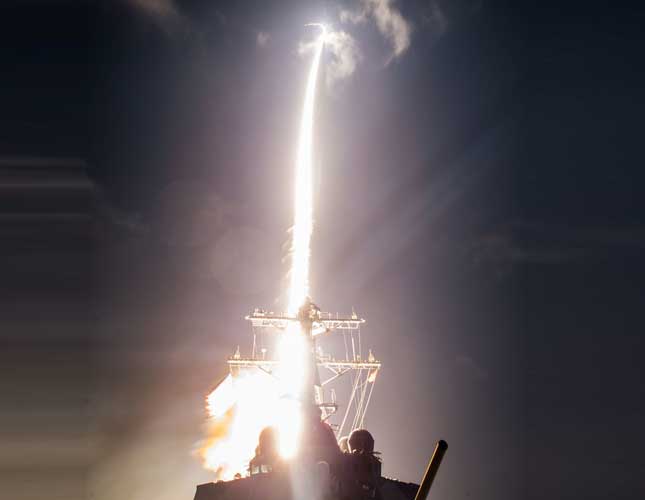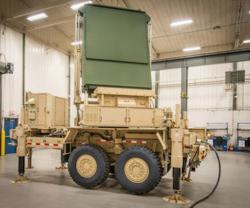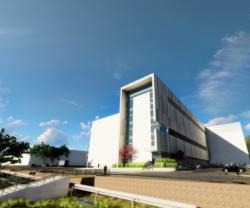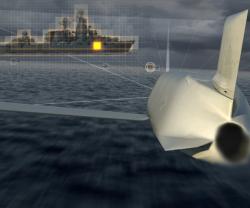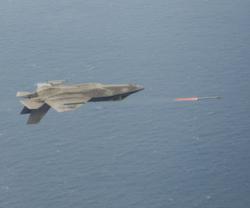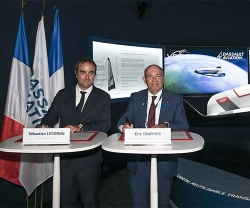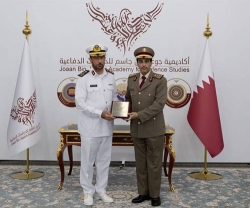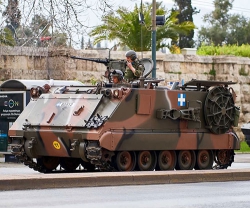The USS JOHN PAUL JONES, supported by the U.S. Navy, Missile Defense Agency and Lockheed Martin, used the latest evolution of its Aegis Combat System to detect, track, engage and launch a missile to intercept a Medium Range Ballistic Missile target.
This exercise marked the first shipboard demonstration of the Aegis Baseline 9.2 (BMD 5.1) Ballistic Missile Defense (BMD) tracking and engagement capabilities against more complex threats with increased battle space in support of the U.S. Phased Adaptive Approach to protect Europe from ballistic missile attack.
The test, called Standard Missile-3 Block IIA Cooperative Development Flight Test Maritime - 1 (SFTM-1), demonstrated the integrated capabilities of the Aegis Weapon System and how it has continually evolved to counter advanced threats. SFTM-1 is a development test that supports BMD 5.1 certification expected in 2018.
“Aegis continues to help sailors pace the threat thanks to upgrades we call baselines that leverage our extensive Common Source Library. With each baseline, Lockheed Martin brings advanced missile defense capabilities and enhanced integration with other systems external to the ship,” said Paul Klammer, Director, Aegis BMD.
“This exercise included a series of tests to verify the operation of the BMD 5.1 Aegis Weapon System on board ship. We're proud of the Navy and Missile Defense Agency working together with our Lockheed Martin engineers to make this complicated test a success,” he added.
BMD 5.1 is the third generation of Aegis BMD capability and delivering the program to the Navy and the Missile Defense Agency is critical. Under this baseline configuration, Aegis merges BMD and anti-air warfare into its Integrated Air and Missile Defense (IAMD) capability using commercial-off-the-shelf and open architecture technologies.
This test builds upon joint research investments by the United States and Japan. Lockheed Martin is developing a Baseline 9/BMD 5.1 variant computer program, referred to as J7, for deployment on Japan's Aegis destroyers.
This test also builds on prior Baseline 9 successes, when Aegis demonstrated its advanced IAMD capabilities and was certified by the Navy and Missile Defense Agency. As the targets and threats have become more advanced, Aegis BMD has evolved over the last 20 years from a tracking experiment to today's capability in which it can detect, track and engage targets.
The central component of the Lockheed Martin-developed Aegis BMD Combat System is the SPY-1 radar; the most widely-fielded naval phased array radar in the world. The Aegis system and SPY-1 radar provide the U.S. and allied nations with advanced surveillance, anti-air warfare and missile defense capabilities.
As a proven world leader in systems integration and development of air and missile defense systems and technologies, Lockheed Martin delivers high-quality missile defense solutions that protect citizens, critical assets and deployed forces from current and future threats.
Lockheed Martin’s experience spans missile design and production, hit-to-kill capabilities, infrared seekers, command and control/battle management, and communications, precision pointing and tracking optics, radar and signal processing, as well as threat-representative targets for missile defense tests.
Headquartered in Bethesda, Maryland, Lockheed Martin is a global security and aerospace company that employs approximately 97,000 people worldwide and is principally engaged in the research, design, development, manufacture, integration and sustainment of advanced technology systems, products and services.

